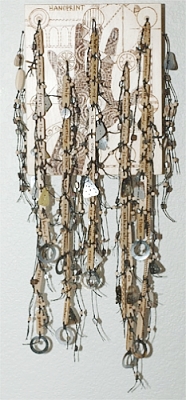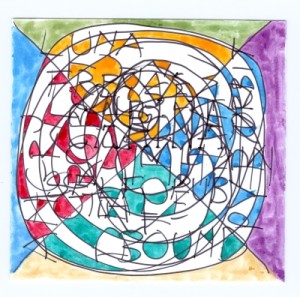I write about things that cannot possibly exist in this universe, as passionately as if they did. I make art that directly references myths, folktales, and alternative beliefs that I do not believe in. And then I sell that art to people who, presumably, do.
They and I have one certain link: our appreciation for beauty and creativity. When they see it, they might ascribe it to some higher power working through me. When I make it, or see it come to life under another’s hands, I see frail and limited mortal minds reaching out to the universe.
I am the agnostic standing in the stained-glass church, rejoicing in light, color, chemistry, and engineering. It’s not a sterile joy, far from it. I get the same transcendent feeling when I see bower-birds dancing to attract mates. Or the devastating function and beauty of a spiderweb. Or gold and iron, and know them to be flung from the cores of long-dead stars. Nothing I make – nothing my species makes – will likely last long enough to leave more than a trace a few billion years from now. What is comforting is that we dared to make something, out of the formless concepts triggered by complex electro-chemical reactions in our brains.
 This is Handprint, a text-based wall piece I did back in 2006. It’s visually complex, requiring no deeper study to enjoy it. But every string of wooden beads forms a complete sentence:
This is Handprint, a text-based wall piece I did back in 2006. It’s visually complex, requiring no deeper study to enjoy it. But every string of wooden beads forms a complete sentence:
What came first, the hand or the brain? We are not the only animal to use tools, but perhaps the only one to worship them, while forgetting that we made them. We make fire, flint knives, cathedrals and microchips. We weave myths and excuses, raise up gods from crossroads and darkened mirrors. We confuse art for reality, image for inspiration. Extol the made, but deny the maker: such is our handprint on the world.
I’m human and self-aware enough to value certain little tics and rituals that I know do nothing to affect my place in the world. All they can do – all any ritual, of any faith or creed, can truly do for me – is change how I perceive myself. I play with divination tools, not because I trust them to magically alter the universe around me, but because they help me narrow down issues in my own psyche.
A very long time ago an art-therapy friend introduced me to the concept of mind-maps. These can be elegant drawings, structured flow-charts and spreadsheets, or exuberant scribbles. They highlight a material good, goal, or process the artist needs to attain/complete, and provide a mental focus for the artist’s attention. Mind-maps are amazing for book artists, because we are always desperate for good content.
I go for scribbles and layers. I like to nest my ultimate goals in webs of other information. Partly because I love the idea of secret documents. Partly because of the enjoyment I get when untangling them. Partly because the things I want to say might not be as well-received if I splash them across a canvas in giant letters of paint and glitter.
One of the earliest mind-maps I did over 20 years ago consisted of titles of books and art I wanted to create, and the names of galleries and publishers I wanted to approach with those eventual masterworks. (Ha!) All tangled together in a swirl of scribbles, intersecting lines, and blocks of pure color. The idea was that writing down those names might make them more important to me. I can’t say that it really worked that well in 1992.
 But in 2011, when it came time to query for Bloodshadow and then for Moro’s Price, I thought it might be fun. It was. Better than that, using the names in a throwaway piece of abstract art gave me some creative distance from my work. That distance forced me to look closer at my writing. I saw where it wasn’t the best it could be. I learned to winnow out which publishers might be better for my goals. Buried in here are the names of the publishers I considered for the two manuscripts mentioned above.
But in 2011, when it came time to query for Bloodshadow and then for Moro’s Price, I thought it might be fun. It was. Better than that, using the names in a throwaway piece of abstract art gave me some creative distance from my work. That distance forced me to look closer at my writing. I saw where it wasn’t the best it could be. I learned to winnow out which publishers might be better for my goals. Buried in here are the names of the publishers I considered for the two manuscripts mentioned above.
Did my mind-maps get me published? Nope. Were they a tool along the way? Sure. Am I going to eventually turn the concept into a piece or two of marketable book art? Hell, yes.